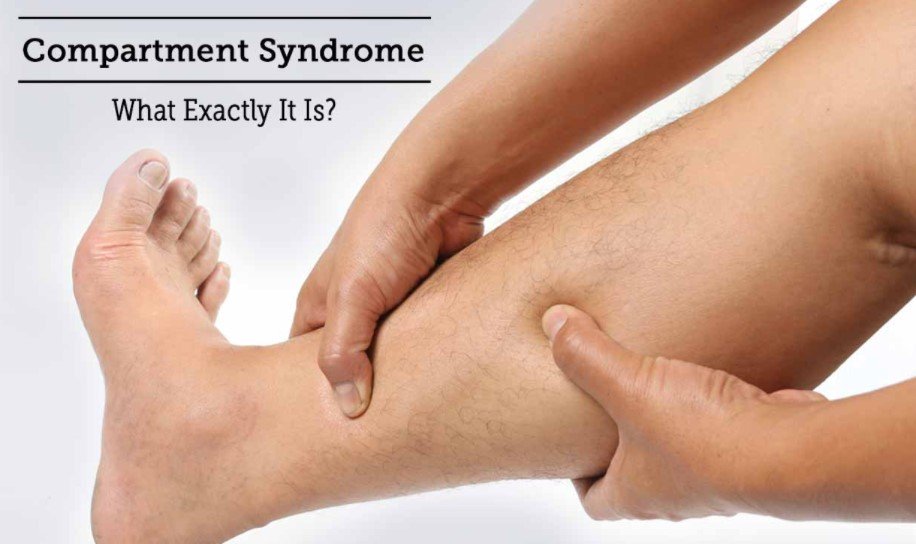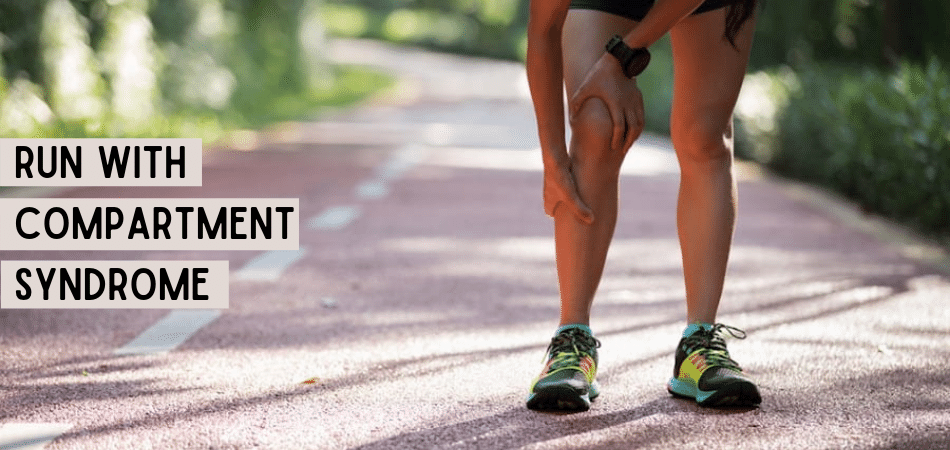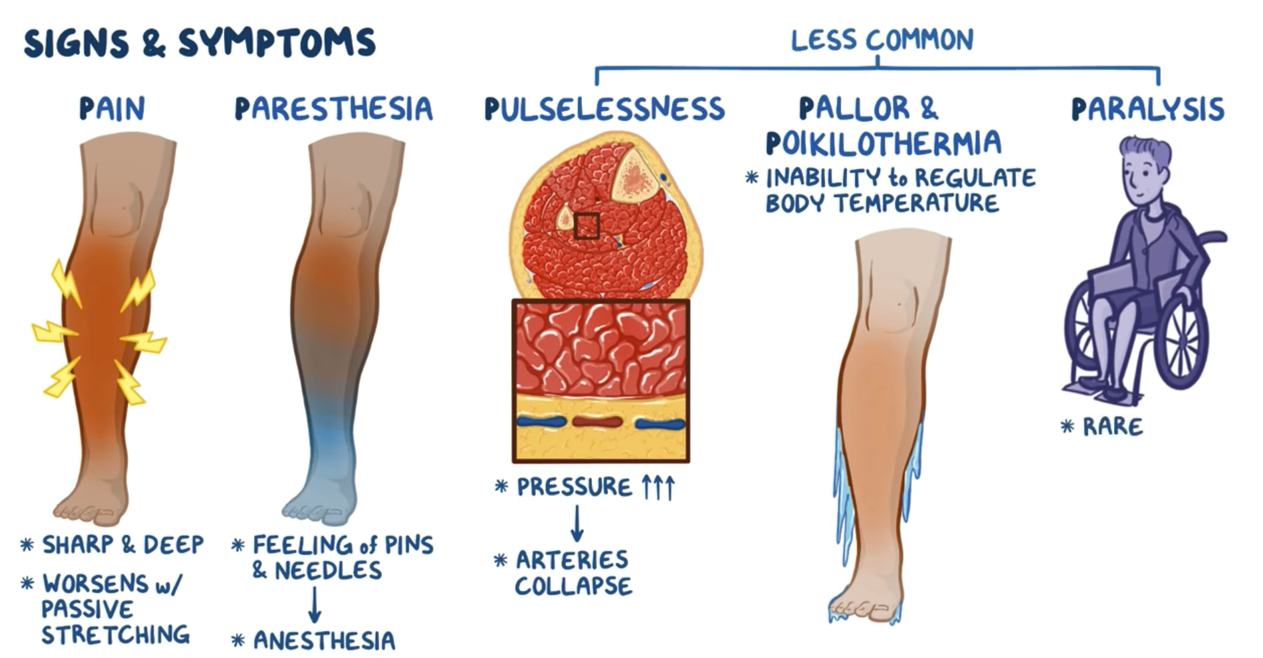Running is fun unless you are hit with an injury. Speaking of injuries, exertional compartment syndrome happens to be the most common among runners. Most regular runners are familiar with this injury to some extent. Initially, it is a pain that grows over time. Generally, compartment syndrome takes place in the shin area.
Now, the question is Can You Run with Compartment Syndrome? The answer is, yes, you can run with compartment syndrome, but you must know how far you can stress it. If you know more about the injury and how far it can go, it’s easier to put the barrier where it’s necessary.
This article will guide you throughout the process. Here, you’ll know how your running can be improved even with compartment syndrome.
What Is Compartment Syndrome, And Why Is It So Serious?
Compartment syndrome aka Anterior Compartment Syndrome (ACS) is a type of injury caused inside body compartments due to the pressure increment. If you know the body anatomy, it will get easier to understand the syndrome properly. There are compartments in the legs, feet, hands, and arms.
There are two types of compartment syndrome
Acute and chronic compartment syndromes are the two types. In acute syndrome, take immediate medical support. This is serious than chronic compartment syndrome. Acute compartment syndrome can lead to serious consequences such as muscle damage.
In the case of chronic compartment syndrome, when you work at a stretch or move any of the compartments regularly, it increases blood pressure. This will result in cramping or pain. The leg pain will remain for a long time even after you stop working with the particular area.
This pain and its consequences are called chronic compartment syndrome. It happens mainly to runners because of building excess muscle inside the shin area.
Things you need to know
The injury grows at a high pace and restricts the runner from fulfilling the running target. Eventually, it will stop you from running if not treated in time. Blood flow decreases at muscle compartment areas. The specific muscle will not get enough nutrients and blood flow. Many runners and joggers had to stop jogging and running for such an issue. And, this is where the dangerousness of compartment syndrome exists.
Whenever you notice regular cramping after completing a specific running distance, you must diagnose compartment syndrome. Otherwise, the aftermath can get serious and the ACS may stop you from all the workout activities.
Can You Run with Compartment Syndrome?
The truth about running with compartment syndrome is very simple. You’ll not face any trouble running with compartment syndrome unless it is a chronic compartment syndrome. In chronic compartment syndrome, you need to shorten the running distance to get rid of the pain. But, running is fine.
The running shoes you’re choosing play a vital role in this matter. You must need comfortable running shoes for compartment syndrome with a doctor’s recommended orthotics. With the right orthotic, the blood flow will remain at a normal rate. At the same time, the compartment will come to a balanced compartment pressure.
Dr. Casey Walker, a famous physician quoted the importance of orthotics. She said, “The right insole and proper orthotics can cure up to 60% of running injuries related to compartment”.
If you follow the above process with shortening the distance, wearing shoes, and the doctor’s recommended orthotics, the syndrome will not hamper your daily running routine.
Causes of Compartment Syndrome
A clear idea about the causes of compartment syndrome will help you out to diagnose it accurately. In general, biking, running, swimming, or any activity that requires consistent limb movement is the cause of compartment syndrome. The muscle and compartment suffer from increase pressure and it affects the blood flow. Eventually, it turns into compartment syndrome.
The next cause is a faulty shoe insole for running, walking, or biking. You’ve to choose an insole that is comfortable to your feet and provides the highest support. If you run on a hard surface like concrete or pavement, there is a large chance of getting this type of severe injury.
When you look at the other causes, it will be easy to track the reason for compartment syndrome. Crush injuries while running or biking, tight bandages during a football match, or blood clotting in the vessel after getting hurt are a few of the causes of compartment syndrome.
Avoid anything that relates directly or indirectly with these causes to avoid the risk.
Common Sign and Symptoms of Compartment Syndrome
Expert physicians and orthopedic doctors always advise you to visit the nearby healthcare center if you notice any type of pain in your limbs. This is the first sign of compartment syndrome.
The pain should have a pattern. For example, if you feel pain or cramping after running for 2 miles, it is a clear sign of compartment syndrome in naked-eye. The next sign of compartment syndrome is numbness in the legs or shin pain.
The numbness will not go and the duration will start to increase day by day. In compartment syndrome, such numbness affects not only your running or jogging activity but also other activities. It becomes difficult to walk.
If you see swelling or bruising near the shin, it is because of compartment syndrome. Consult with a doctor or orthopedic expert as soon as possible. Blood clotting in the blood vessel is tracked with such swelling.
Numbness in muscle, cramping during the running activity, or swelling and bruising sign-on shin are the key signs and symptoms of compartment syndrome. Diagnose as early as possible to identify either it is acute or chronic for following further steps.
How Do You Treat Compartment Syndrome?
The treatment depends on the severity of compartment syndrome. If the numbness or muscle pain is temporary, it is most probably chronic compartment syndrome. You can continue all activities and workouts with a decreased amount. It requires using physiotherapy and suitable orthotics.
If you get acute compartment syndrome, a general practitioner will be the person you should seek consultancy for. In many cases, it may require surgery or proper medical rest. The orthopedic surgeon will take of the rest.
When someone puts extra effort into exercise; especially leg exercise, it’s possible to get affected by the syndrome. Early measures and reduction of the workout session may improve the situation. Expert opinion will matter the most in such cases.
Conclusion
If you end up with a medical emergency like compartment syndrome, it shouldn’t be the end of your passion for running. As you’ve been wondering whether can you run with compartment syndrome or not, it turns out not to be a big issue.
A consultancy with a nearby healthcare specialist is the best option you have. Make sure that your trainer knows about the cramping or pain.
Meanwhile, you stick to your running and be sure not to overdo anything or put too much strain before you recover. It will guide them to get a good and healthy running experience.



